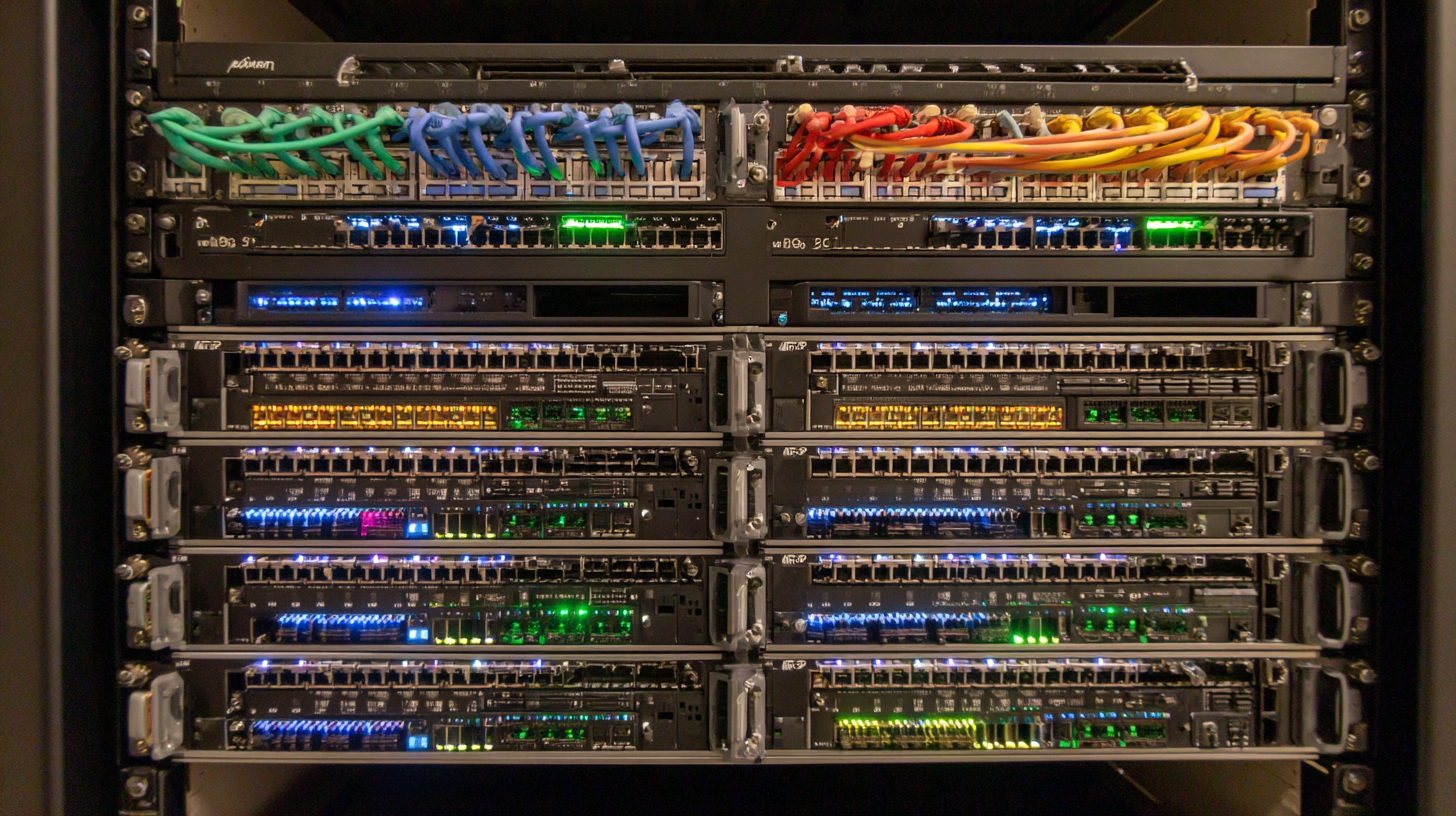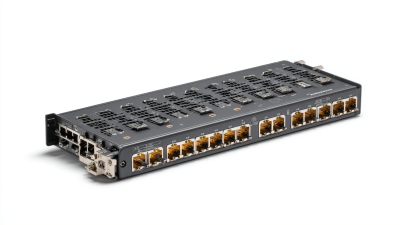In today’s rapidly expanding digital landscape, maximizing network efficiency has become crucial for organizations aiming to maintain competitive advantages. According to a recent report by Gartner, network inefficiencies can lead to increased operational costs, decreased productivity, and ultimately, lost revenue opportunities. As enterprises continue to adopt cloud services and IoT solutions, the demand for robust routing capabilities is higher than ever. The Juniper Mx204, with its advanced features and capabilities, offers a dynamic solution to address these challenges. This high-performance router is designed to optimize bandwidth utilization and enhance overall network performance. By leveraging the Juniper Mx204's capabilities, organizations can streamline operations, reduce latency, and ensure seamless connectivity, thus paving the way for innovative applications and services that meet the needs of modern users efficiently.

The Juniper MX204 is engineered with a robust architecture that underpins its functionality and performance. At its core, the MX204 utilizes a compact form factor integrated with advanced forwarding capabilities, making it suitable for a variety of network environments. Its highly efficient, modular design not only supports high density interfaces but also accelerates data processing, ensuring that user traffic flows seamlessly.
Key to optimizing performance in the MX204 is its virtualized architecture, which allows for scalable and flexible deployments. The device supports Virtual Chassis technology, enabling multiple units to be managed as a single entity. This simplifies network management and reduces operational overhead. Furthermore, the MX204 leverages a rich set of features, including support for low-latency Ethernet and high-performance routing protocols, which are critical for maintaining an efficient and responsive network. By understanding these architectural elements, network engineers can effectively maximize the capabilities of the Juniper MX204, tailoring configurations that align with specific performance needs.
The Juniper MX204 is designed to be a powerhouse in enhancing network efficiency, showcasing a range of key features that cater specifically to modern infrastructure needs. Its compact and lightweight design allows for easy deployment, making it an ideal choice for data centers aiming to upgrade their performance without the burden of excessive space requirements. Additionally, the MX204 is engineered with advanced routing capabilities, which ensure high-speed data processing and seamless connectivity, significantly reducing latency across the network.
Tips for maximizing network efficiency with the MX204 include leveraging its AI-driven automation features. By automating routine tasks and employing machine learning, network administrators can reduce human error and free up valuable time for more critical operations. Furthermore, utilizing the built-in security features of the MX204 enhances the overall resilience of the network, protecting it from potential threats while maintaining optimal performance.
Another important factor is the integration of the MX204 with existing network elements. By ensuring compatibility and interoperability with various systems, organizations can streamline their operations, facilitating faster data flows and enhancing overall network responsiveness. This approach not only maximizes efficiency but also prepares the network to adapt to future demands in an ever-evolving digital landscape.
To enhance throughput with the Juniper MX204, effective configuration strategies are essential. The MX204, known for its powerful processing capabilities and versatile features, delivers excellent performance when optimized correctly. One key strategy is to prioritize traffic types using Quality of Service (QoS) settings. By classifying and managing bandwidth for critical applications, you can ensure that essential data flows smoothly without interruptions.
Tips: Implementing hierarchical QoS can help you manage different classes of service. Start by identifying high-priority applications—like voice and video—and allocate sufficient bandwidth for them. Additionally, consider implementing link aggregation to increase the throughput by combining multiple links into one logical connection. This not only boosts performance but also enhances redundancy and reliability.
Another crucial approach is to optimize routing protocols used within the MX204. By fine-tuning BGP or OSPF configurations, you can reduce latency and improve the efficiency of packet delivery. Adjusting route preference and summarizing routes can minimize unnecessary route lookups and enhance overall network performance.
Tips: Regularly review your routing configurations and keep them updated. Implement route filtering to prevent unnecessary BGP advertisements and maintain a streamlined routing table, which directly contributes to lower latency and higher efficiency.

Effective monitoring and maintenance are crucial for maximizing network efficiency, especially with devices like the Juniper MX204. Transitioning from reactive to proactive strategies, organizations can implement AI-driven predictive maintenance solutions that leverage data analytics to anticipate potential issues before they escalate. This approach not only enhances equipment reliability but also minimizes the risk of costly unplanned downtime, ultimately leading to improved operational efficiency.
Integrating condition monitoring systems with existing maintenance management frameworks allows teams to streamline their processes significantly. By harnessing real-time data, maintenance schedules can be optimized, leading to better asset management. These advanced systems enable organizations to closely monitor performance metrics and identify trends, facilitating timely interventions that keep network operations running smoothly. For the Juniper MX204, adopting such best practices can ensure that the network remains robust and efficient, allowing businesses to focus on their core objectives rather than on unexpected maintenance challenges.
Integrating the MX204 into existing network infrastructures is crucial for businesses in the rapidly growing ASEAN region, where companies face heightened network security demands and a complex regulatory environment. The MX204 can streamline integration by enhancing scalability and performance, enabling seamless connectivity across diverse network components. This adaptability is essential for enterprises aiming to navigate the dual challenges of security and compliance in a digitally evolving landscape.









